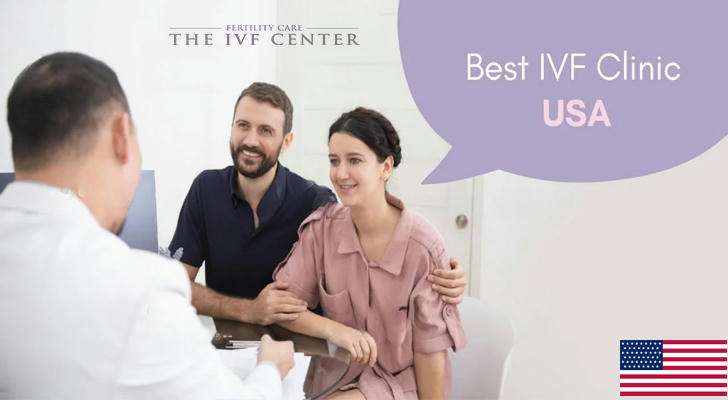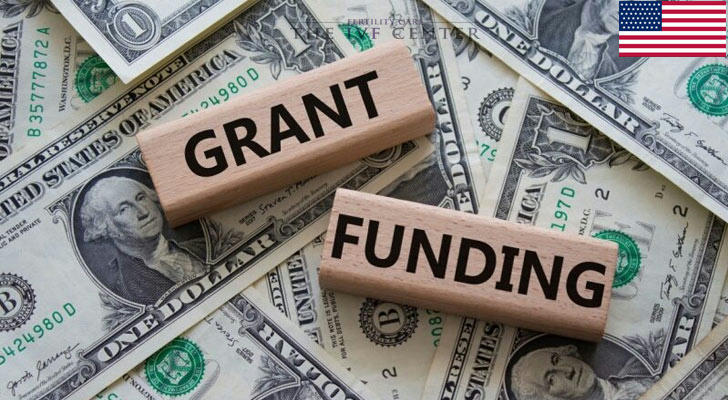How to Get IVF Financial Support in the U.S.: A Guide to Grants and Charities
📢 Grants and Charities | In Vitro Fertilization | Low Cost Fertility Clinics | How to Get Ivf Treatment

In the United States, in vitro fertilization (IVF) offers hope to many couples struggling with infertility. However, the high cost of treatment often makes it seem out of reach. According to 2025 data, a standard IVF cycle (excluding medications and additional procedures) averages between $12,000 and $25,000, and when including medications, genetic testing, and other add-ons, the total cost per cycle can range from $15,000 to $30,000 or more. A typical IVF cycle, from ovarian stimulation to embryo transfer, usually takes 4 to 6 weeks. Given this significant financial burden, understanding and utilizing available financial support is crucial.
Why Is IVF So Expensive?
The high cost of IVF is due to several factors:
- Complexity & Technology: IVF involves precise medical techniques, specialized lab equipment, and skilled professionals.
- Personalized Treatment: Each patient’s protocol is tailored to their needs, requiring adjustments in medications, dosages, and procedures.
- High Medication Costs: Fertility drugs (e.g., ovulation stimulants) alone can cost $3,000–$6,000 per cycle.
- Additional Procedures: Preimplantation genetic testing (PGT), intracytoplasmic sperm injection (ICSI), embryo freezing, and storage add to expenses.
Despite the costs, financial assistance is available through grants, charities, and other programs.
IVF Grants: Direct Financial Aid
IVF grants are funds provided by nonprofits or foundations to pay for part or most of the treatment costs. Each has specific eligibility criteria and application cycles.
1. Eligibility Overview
Common requirements include:
- Infertility diagnosis (confirmed by a reproductive endocrinologist).
- U.S. residency/citizenship (most require applicants to be citizens or permanent residents).
- Age limits (often under 44 for women using their own eggs).
- Financial need (some set income caps, e.g., INCIID’s scholarships target households earning <$65K/year).
- No biological/legal children (some grants, like Filotimo Foundation’s, prioritize first-time parents).
- Good health (must be physically/mentally fit for treatment).
2. Top IVF Grant Providers & Application Process
| Organization | Funding Offered | Key Requirements | Application Process |
|---|---|---|---|
| Tinina Q. Cade Foundation | Up to $10K for treatment or domestic adoption (cash or medication grants). | Infertility diagnosis, U.S. residency, $50 fee, medical records, income proof. | Annual cycle; submit via website with docs (e.g., doctor’s letter, tax returns). |
| Baby Quest Foundation | $2K–$16K (awarded biannually); covers medications. | Open to all couples/singles; financial need, medical proof. | Online form + personal statement; may require sharing your story. |
| Hope for Fertility | $250–$5K (biannual grants). | U.S. residents; $50 application fee. | Website application; may involve fundraising participation. |
| Jewish Fertility Foundation | $1K–$10K (paid to clinics); some partner clinics offer discounts. | At least one Jewish partner. | Check website for details. |
Pro Tips:
- Review eligibility carefully.
- Prepare documents early (medical records, financial proofs, essays).
- Apply to multiple grants to increase chances.
IVF Treatment in the U.S. by Age Group: Pros & Cons
| Age Group | Advantages | Disadvantages | Best For |
|---|---|---|---|
| <35 | • Highest success rates (40-50%). • High egg quality & quantity. • Low miscarriage risk (<15%). | • Expensive ($12K-$15K/cycle). • Social pressure (if not ready). | • Infertility (e.g., blocked tubes). • Genetic screening (PGT). • Egg freezing (career planning). |
| 35-37 | • Good success rates (35-40%). • PGT-A improves outcomes. | • Declining egg reserve. • Higher miscarriage (~20%). | • Age-related fertility drop. • Recurrent miscarriages. • Family balancing. |
| 38-40 | • Moderate success (25-30%). • PGT reduces genetic risks. | • Fewer viable eggs. • May need donor eggs. | • Secondary infertility. • Early ovarian decline. |
| 41-42 | • IVF still possible. • Donor eggs boost success (50%+). | • Very low own-egg success (10-15%). • Pregnancy risks rise. | • Those insisting on own eggs. • Open to donor eggs. |
| ≥43 | • Donor IVF success ~40-50%. • Uterus usually functional. | • Own-egg success <5%. • High health risks. | • Donor eggs/embryos. • Requires medical clearance. |
Charities & Patient Assistance Programs
1. Medication Assistance
Programs offering discounts on fertility drugs:
- EMD Serono’s Compassionate Care: 25–75% off medications (based on income/medical need).
- Ferring’s Heart Beat Program: meds for cancer patients preserving fertility.
- LIVESTRONG Fertility: Aid for cancer patients freezing eggs/sperm/embryos.
- First Steps Program: 5–75% discounts (income-based).
2. Other Charities
- RESOLVE: National Infertility Association’s website lists grants/discounts.
- FertilityIQ: Curated database of IVF grants and charities.
- Clinic Partnerships: Some clinics (e.g., Shady Grove) match grants or offer discounts.
Alternative Funding Options
- Fertility Loans: Specialized lenders (e.g., CapexMD, Sunfish) offer payment plans (with interest).
- Multi-Cycle Packages: Clinics/third parties (e.g., ARC Fertility) bundle cycles at lower rates, sometimes with refund guarantees.
- Insurance Mandates: Some states (e.g., NY, NJ) require IVF coverage; check local laws. Federal plans (FEHB) may also cover IVF in 2025.
- Employer Benefits: Companies increasingly include fertility coverage (ask HR).
- Crowdfunding: Platforms like GoFundMe can help raise funds from friends/community.
Final Thoughts
While IVF costs in the U.S. are steep, grants, charities, and creative financing can make parenthood possible. Research thoroughly, apply early, and consult your clinic for tailored advice. Remember—you’re not alone on this journey. Best wishes!

